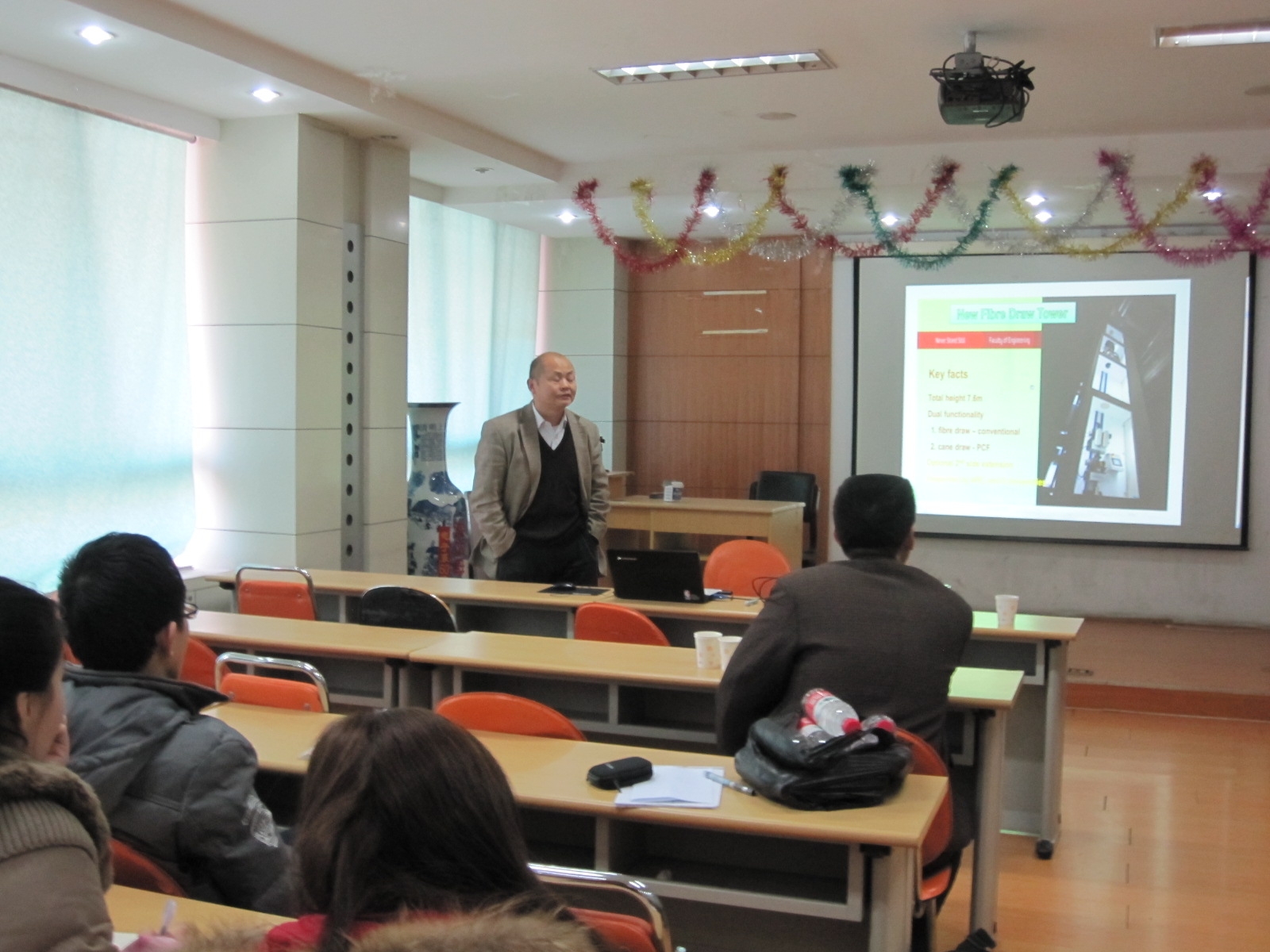On January 18th, 2013, Professor Gangding Peng from University of NSW visited the School of Information Science and Engineering and gave an academic report titled “Development of Bi/Er Optical Fibres for Ultra Broadband Emission”.
In this report, Prof. Peng presented their recent work on the first development of a Bi/Er/Al/P co-doped germanosilica optical fiber showing ultra broadband luminescence between 1000 and 1570 nm, covering O-, E-, S-, C- and L-bands, when pumped by 532, 808 or 980 nm lasers. With a proper selection of pump wavelength(s), this Bi/Er codoped fiber could be used as an ultra broadband gain medium for ultra broadband band ASE sources, fiber lasers or amplifiers in telecommunications, and other fields.
After the report, Prof. Peng carried out exchanges with Professor Jun Chang and Xingyu Zhang on the development of ultra broadband emission. And he also answered the questions of students patiently.
Gang Ding Peng received the B.Sc. degree in physics from Fudan University, Shanghai, China, in 1982, and the M.Sc degree in applied physics and the Ph.D. degree in electronic engineering from Shanghai Jiao Tong University, Shanghai, China, in 1984 and 1987, respectively. From 1987 through 1988 he was a lecturer of the Jiao Tong University. He was a postdoctoral research fellow in the Optical Sciences Centre of the Australian National University, Canberra, from 1988-1991. He has been working with University of NSW in Sydney, Australia since 1991, was a Queen Elizabeth II Fellow from 1992-1996 and is currently a Professor in the same university. He is a fellow and a life member of both OSA and SPIE. His research interests include optical fiber and waveguide devices, silica and polymer optical fibers, optical fiber sensors and nonlinear optics.

